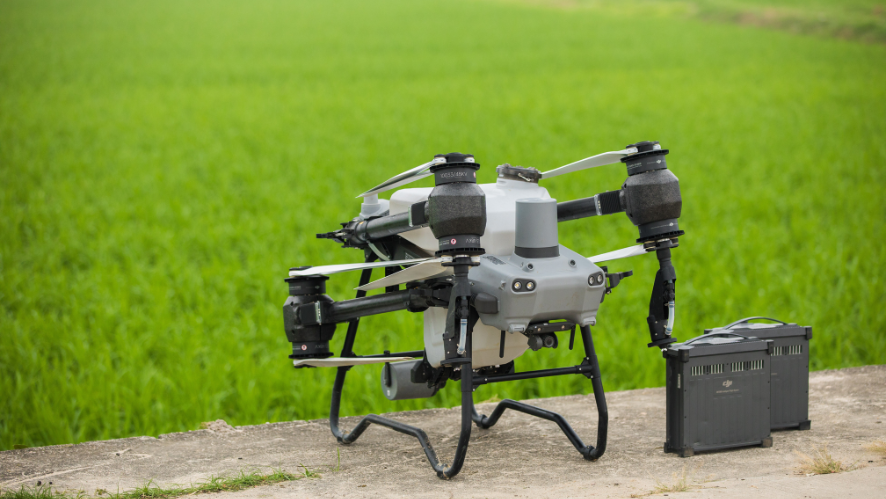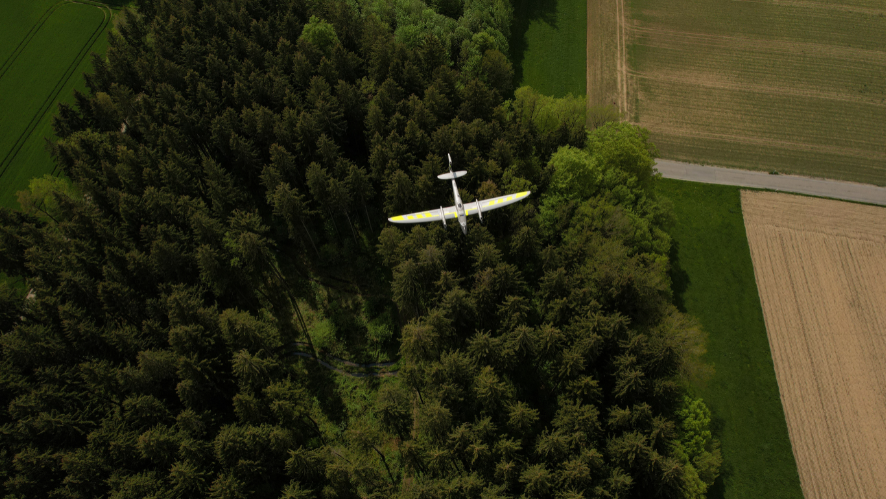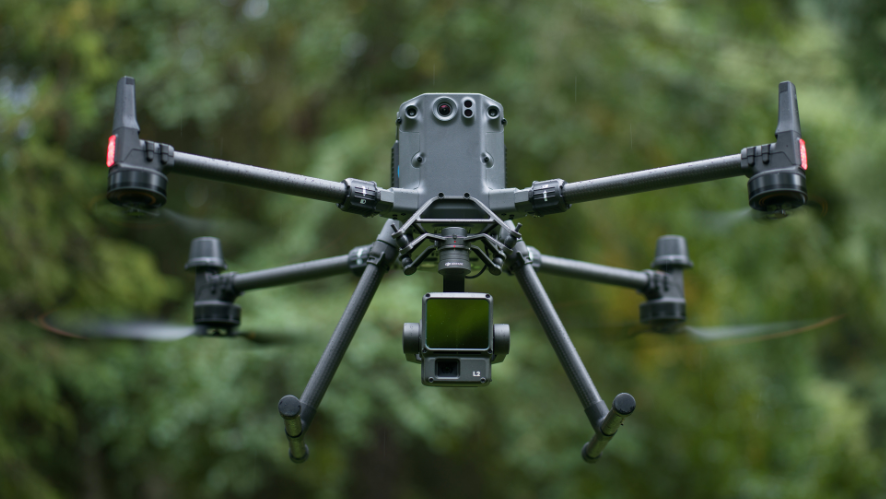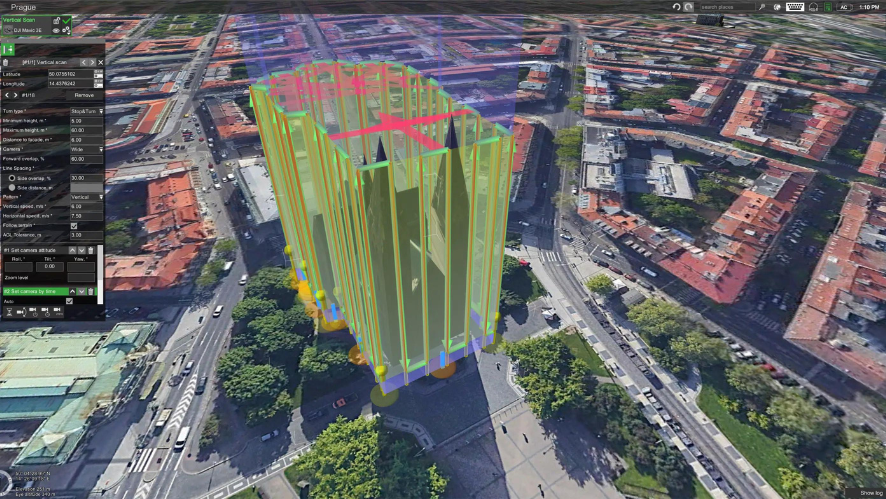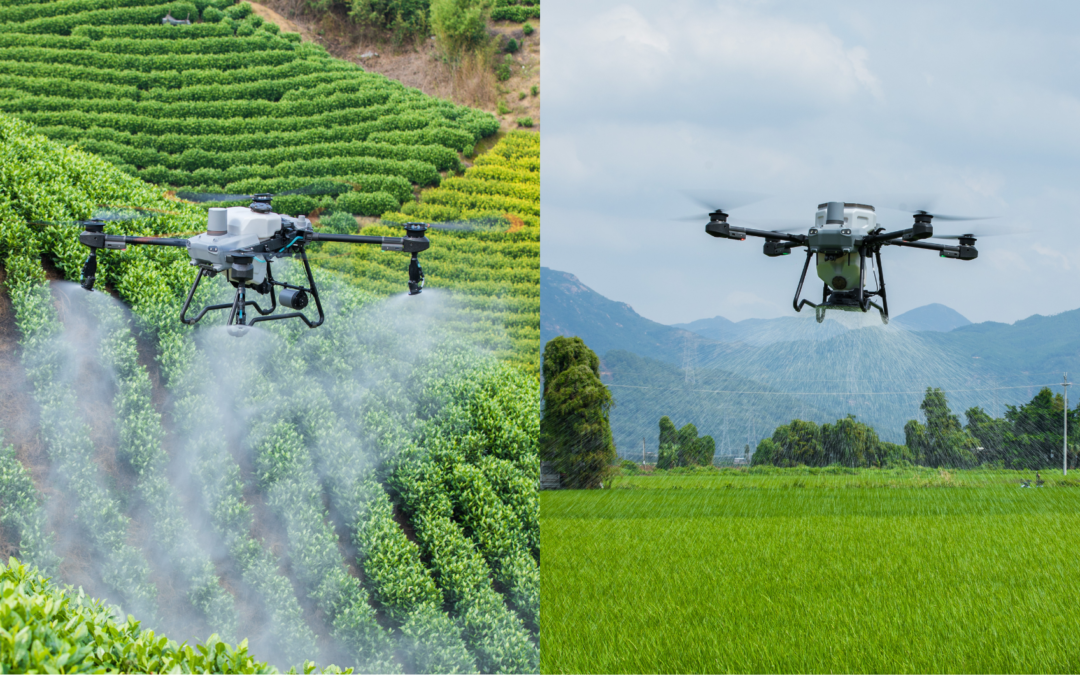At the forefront of precision farming, drones have emerged as essential tools for modernizing agricultural practices. They not only revolutionize the way farmers supervise and manage crops, but also promote precision agriculture, making it more effective and sustainable. Among the pioneers of this innovation is DJI, with the latest DJI Agras T50 and T25 drones.
In this article, we’ll explore the differences between the DJI Agras T50 and T25P drones and how these devices can increase productivity and optimize crop management, offering a detailed comparison to help you choose the most suitable drone for your needs.
DJI Agras T50: Power and Efficiency for Large Areas
The DJI Agras T50 is a real powerhouse in agricultural technology. Designed to meet the demands of large agricultural operations, this drone stands out for its ability to spray and disperse substantial loads. With a dual-rotor coaxial propulsion system, the T50 can transport up to 40 L of liquids for spraying or 50 kg of solids for spreading, covering up to 21 hectares per hour with unparalleled efficiency.
In addition, its advanced dual radar and binocular vision technology offers exceptionally accurate obstacle detection and avoidance, essential for working on uneven terrain. Equipped with an ultra-fast charging system, the T50 allows for more flight time and less time on the ground, maximizing daily productivity.
DJI Agras T25: Accessibility and Flexibility for Small and Medium-sized Properties
On the other hand, the DJI Agras T25 is the ideal solution for smaller properties, where portability and ease of use are priorities. With a load capacity of 20 L for liquids and 25 kg for solids, the T25 retains many of the advanced features of the T50, but in a more compact and manageable format. This includes the same obstacle avoidance and terrain tracking system, ensuring safe and precise operations even in smaller areas.
The T25 also benefits from a double atomization spray configuration, ideal for intensive treatments that require precision, such as in orchards or plantations with dense foliage. Despite its small size, the T25 does not compromise on performance, representing an excellent option for farmers looking for efficiency and cutting-edge technology without the need for investments as robust as those required by the T50.
Main differences between the DJI Agras T50 and T25P drones
| Features | Agras T50 | Agras T25 |
| Load capacity | 40 L (líquidos), 50 kg (sólidos) | 20 L (líquidos), 25 kg (sólidos) |
| Coverage Area | Up to 21 hectares per hour | Up to 12 hectares per hour |
| Navigation Technology | Dual radar, binocular vision | Dual radar, binocular vision |
| Fast charging | 9 minutes | 9 minutes |
| Portability | Less portable, focus on large areas | High portability |
Choose the Right Drone for Your Farm
Whether you’re a large-scale producer looking to maximize efficiency over vast areas with the DJI Agras T50 or a smaller-scale farmer looking to improve productivity with the DJI Agras T25, both models offer solutions that meet modern precision farming needs. By integrating this equipment into your farming routine, you can increase yields and reduce costs, contributing to more sustainable and responsible agriculture.
For more information such as prices or additional details, please contact us directly!
If you want to know more about these drones, go here:
______________________________________________________________________







